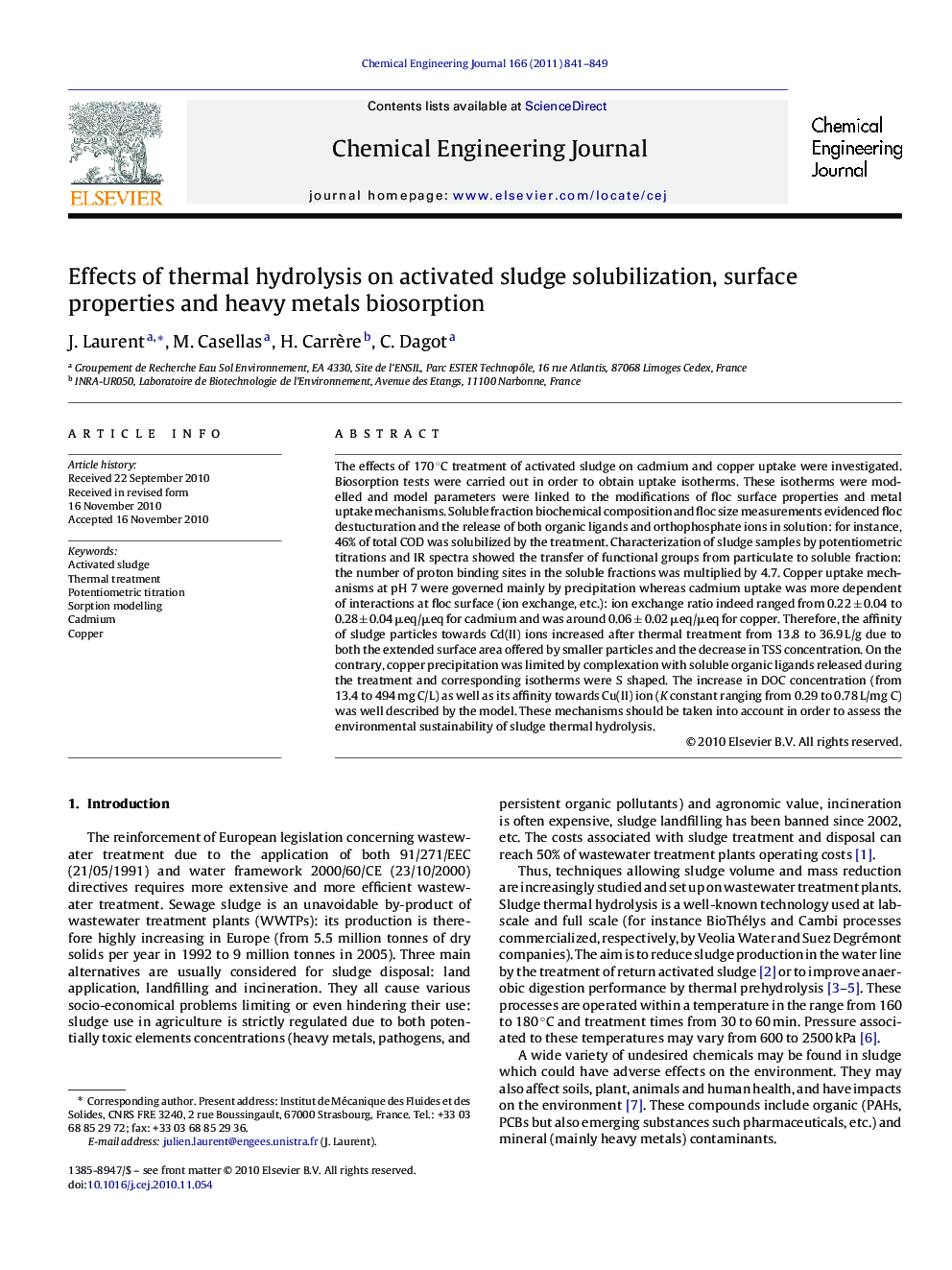| Article ID | Journal | Published Year | Pages | File Type |
|---|---|---|---|---|
| 151460 | Chemical Engineering Journal | 2011 | 9 Pages |
The effects of 170 °C treatment of activated sludge on cadmium and copper uptake were investigated. Biosorption tests were carried out in order to obtain uptake isotherms. These isotherms were modelled and model parameters were linked to the modifications of floc surface properties and metal uptake mechanisms. Soluble fraction biochemical composition and floc size measurements evidenced floc destucturation and the release of both organic ligands and orthophosphate ions in solution: for instance, 46% of total COD was solubilized by the treatment. Characterization of sludge samples by potentiometric titrations and IR spectra showed the transfer of functional groups from particulate to soluble fraction: the number of proton binding sites in the soluble fractions was multiplied by 4.7. Copper uptake mechanisms at pH 7 were governed mainly by precipitation whereas cadmium uptake was more dependent of interactions at floc surface (ion exchange, etc.): ion exchange ratio indeed ranged from 0.22 ± 0.04 to 0.28± 0.04 μeq/μeq for cadmium and was around 0.06 ± 0.02 μeq/μeq for copper. Therefore, the affinity of sludge particles towards Cd(II) ions increased after thermal treatment from 13.8 to 36.9 L/g due to both the extended surface area offered by smaller particles and the decrease in TSS concentration. On the contrary, copper precipitation was limited by complexation with soluble organic ligands released during the treatment and corresponding isotherms were S shaped. The increase in DOC concentration (from 13.4 to 494 mg C/L) as well as its affinity towards Cu(II) ion (K constant ranging from 0.29 to 0.78 L/mg C) was well described by the model. These mechanisms should be taken into account in order to assess the environmental sustainability of sludge thermal hydrolysis.
